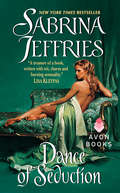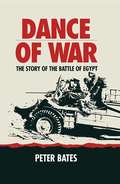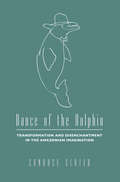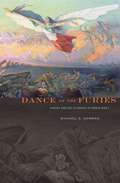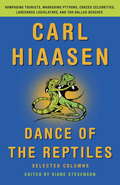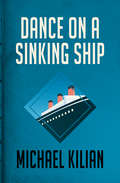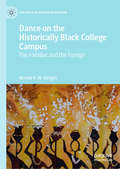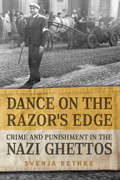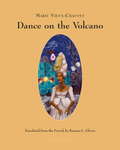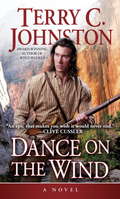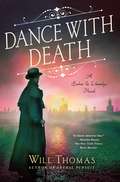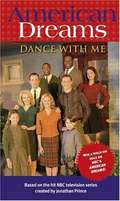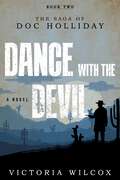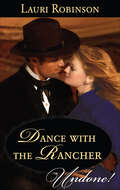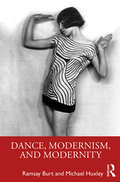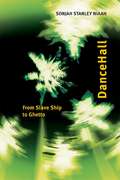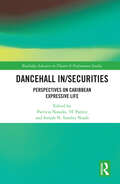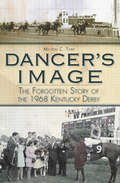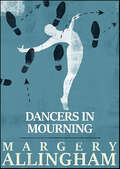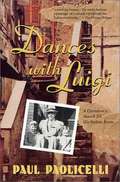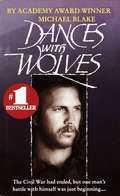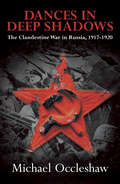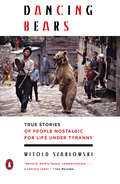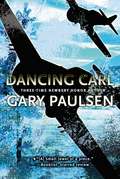- Table View
- List View
Dance of Seduction
by Sabrina JeffriesShe vowed to resist . . .It's difficult enough for Lady Clara Stanbourne to run her London home for reformed young pickpockets without having to contend with a criminal rightnext door! The mysterious Morgan Pryce is obviouslydealing in stolen property, and she will never allowthe handsome scoundrel to lead the children astray.Pryce is very much mistaken if he believes her adelicate rose he can wilt with passionate, unspokenpromises. Now if only Clara could douse the fieryyearning the charming cad ignites inside her.His heated caresses . . .This bold, beautiful temptress is indeed a distraction--and Morgan wishes he could tell the exquisite Clarathe truth: that he is working undercover to break upa notorious crime ring. His mind should be on hisduty--not wondering how it would feel to hold Clarain his arms and taste her luscious lips. But nowthat she has entered into his most dangerous game,Morgan knows he must have her, despite the veryreal peril to his secret mission--andto his heart.eril to his secret mission ... and to his heart!
Dance of War: The Story of the Battle of Egypt
by Peter BatesBased on research in England, Australia, South Africa and New Zealand, this is a detailed account and analysis of Rommel's attempt in July 1942 to break through to Cairo and Alexandria, and the 8th Army's successful defence and unsuccessful attempts to destroy the Panzerarmee. The author, a participant in the events described, supports the view of some historians that the Battle of Egypt, rather than the Battle of Alamein three months later, was the turning point of the war in North Africa. The battle is set against the background of the many nationalities involved, as well as the physical conditions on the battlefield and the urgency of the political context. Particular attention is given to the controversy of the armour's failure to support the infantry, and reasons for this are canvassed.
Dance of the Dolphin: Transformation and Disenchantment in the Amazonian Imagination
by Candace Slater<p>In folktales told throughout much of the Brazilian Amazon, dolphins take human form, attend raucous dances and festivals, seduce men and women, and carry them away to a city beneath the river. They are encantados, or Enchanted Beings, capable of provoking death or madness, but also called upon to help shamanic healers. Male dolphins—accomplished dancers who appear dressed in dapper straw hats, white suits, and with shiny black shoes—reportedly father numerous children. The females are said to lure away solitary fishermen. Both sinister and charming, these characters resist definition and thus domination; greedy and lascivious outsiders, they are increasingly symbolic of a distinctly Amazonian culture politically, socially, economically, and environmentally under seige. <p>Candace Slater examines these stories in Dance of the Dolphin, both as folk narratives and as representations of culture and conflict in Amazonia. Her engaging study discusses the tales from the viewpoints of genre, performance, and gender, but centers on them as responses to the great changes sweeping the Amazon today. According to Slater, these surprisingly widespread tales reflect Amazonians' own mixed reactions to the ongoing destruction of the rainforest and the resulting transformations in the social as well as physical landscape. Offering an informed view of Brazilian culture, this book crosses the boundaries of folklore, literature, anthropology, and Latin American studies. It is one of the very few studies to offer an overview of the changes taking place in Amazonia through the eyes of ordinary people.</p>
Dance of the Furies: Europe and the Outbreak of World War I
by Michael S. NeibergThe common explanation for the outbreak of World War I depicts Europe as a minefield of nationalism, needing only the slightest pressure to set off an explosion of passion that would rip the continent apart. But in a crucial reexamination of the outbreak of violence, Michael Neiberg shows that ordinary Europeans, unlike their political and military leaders, neither wanted nor expected war during the fateful summer of 1914. By training his eye on the ways that people outside the halls of power reacted to the rapid onset and escalation of the fighting, Neiberg dispels the notion that Europeans were rabid nationalists intent on mass slaughter. He reveals instead a complex set of allegiances that cut across national boundaries. Neiberg marshals letters, diaries, and memoirs of ordinary citizens across Europe to show that the onset of war was experienced as a sudden, unexpected event. As they watched a minor diplomatic crisis erupt into a continental bloodbath, they expressed shock, revulsion, and fear. But when bargains between belligerent governments began to crumble under the weight of conflict, public disillusionment soon followed. Yet it was only after the fighting acquired its own horrible momentum that national hatreds emerged under the pressure of mutually escalating threats, wartime atrocities, and intense government propaganda. "Dance of the Furies" gives voice to a generation who found themselves compelled to participate in a ghastly, protracted orgy of violence they never imagined would come to pass.
Dance of the Reptiles: Rampaging Tourists, Marauding Pythons, Larcenous Legislators, Crazed Celebrities, and Tar-Balled Beaches: Selected Columns (Vintage Original Ser.)
by Carl Hiaasen Diane StevensonIf you think the wildest, wackiest stories that Carl Hiaasen can tell have all made it into his hilarious, bestselling novels, think again. Dance of the Reptiles collects the best of Hiaasen's Miami Herald columns, which lay bare the stories--large and small--that demonstrate anew that truth is far stranger than fiction. Hiaasen offers his commentary--indignant, disbelieving, sometimes righteously angry, and frequently hilarious--on burning issues like animal welfare, polluted rivers, and the broken criminal justice system as well as the Deepwater Horizon oil spill, Bernie Madoff's trial, and the shenanigans of the recent presidential elections. Whether or not you have read Carl Hiaasen before, you are in for a wild ride.
Dance of the Tiger: A Novel of the Ice Age
by Bjørn KurtenBjørn Kurten's compelling novel gives the reader a detailed picture of life 35,000 years ago in Western Europe. One of the world's leading scholars of Ice Age fauna, Kurten fuses extraordinary knowledge and imagination in this vivid evocation of our deepest past. This novel illuminates the lives of the humans who left us magnificent paintings in the caves of France and Spain.
Dance on a Sinking Ship
by Michael KilianA foreign correspondent discovers the scoop of a lifetime onboard a doomed ocean liner C. Jamieson Spencer is sipping cognac when Paris starts to burn. As Communists and Fascists battle in the streets below his hotel balcony, this world-weary foreign correspondent does not bother taking notes. He’s too busy falling in love with an enchantingly beautiful stranger. The reporter is just working up the courage to ask the woman her name when a stray bullet pierces her skull. In Paris, love comes quickly and life ends fast. After Spencer files his story on the riots, his editor recalls him to the United States and assigns him to sail on the new luxury liner Wilhelmina, which carries some of the world’s most scandalous figures: from Prince Edward and Wallis Simpson to the Nazi-sympathizing Charles Lindbergh. As the royals play bedroom games, Spencer digs up plenty of gossip—but the real story starts when the lifeboats hit the water.
Dance on the Historically Black College Campus: The Familiar and the Foreign (The Arts in Higher Education)
by Wanda K. EbrightThis volume explores the history of dance on the historically black college and university (HBCU) campus, casting a first light on the historical practices and current state of college dance program practice in HBCUs. The author addresses how HBCU dance programs developed their institutional visions and missions in a manner that offers students an experience of American higher education in dance, while honoring how the African diaspora persists in and through these experiences. Chapters illustrate how both Western and African diaspora dances have persisted, integrated through curriculum and practice, and present a model for culturally inclusive histories, traditions, and practices that reflect Western and African diasporas in ongoing dialogue and negotiation on the HBCU campus today.
Dance on the Razor’s Edge: Crime and Punishment in the Nazi Ghettos (German and European Studies)
by Svenja Bethke Hamburger Edition HIS VerlagsgesThe ghettos established by the Nazis in German-occupied Eastern Europe during the Second World War have mainly been seen as lawless spaces marked by brutality, tyranny, and the systematic murder of the Jewish population. Drawing on examples from the Warsaw, Lodz, and Vilna ghettos, Dance on the Razor’s Edge explores how under these circumstances highly improvised legal spheres emerged in these coerced and heterogeneous ghetto communities. Looking at sources from multiple archives and countries, this book investigates how the Jewish Councils, set up on German orders, formulated new definitions of criminal offenses and established legal institutions on their own initiative as a desperate attempt to ensure the survival of the ghetto communities. Bethke explores how people under these circumstances tried to make sense of everyday lives that had been turned upside down, taking with them pre-war notions of justice and morality, and considers the extent to which this rupture led to new judgments on human behaviour. In doing so, this book aims to understand how people attempted to use their very limited scope for action in order to survive. Set against the background of a Holocaust historiography that often still seeks for clear categories of "good" and "bad" behaviour, Dance on the Razor’s Edge calls for a new understanding of the ghettos as complex communities in an unprecedented emergency situation.
Dance on the Volcano
by Marie Vieux-Chauvet Kaiama L GloverDance on the Volcano tells the story of two sisters growing up during the Haitian Revolution in a culture that swings heavily between decadence and poverty, sensuality and depravity. One sister, because of her singing ability, is able to enter into the white colonial society otherwise generally off limits to people of color. Closely examining a society sagging under the white supremacy of the French colonist rulers, Dance on the Volcano is one of only novels to closely depict the seeds and fruition of the Haitian Revolution, tracking an elaborate hierarchy of skin color and class through the experiences of two young women. It is a story about hatred and fear, love and loss, and the complex tensions between colonizer and colonized, masterfully translated by Kaiama L. Glover.From the Trade Paperback edition.
Dance on the Wind
by Terry C. JohnstonThe world of an early 19th century Kentucky farm proves to be too small a place for a boy with a vision. His wanderlust takes him to the Ohio River and into the fierce business world of old St. Louis, where he meets a veteran trapper. Filled with the trapper's stories, he plans to set out to experience the wilderness lore firsthand.
Dance with Death: A Barker & Llewelyn Novel (A Barker & Llewelyn Novel #12)
by Will ThomasLondon, 1893: Private enquiry agents Cyrus Barker and Thomas Llewelyn are called in to protect Tsesarevich Nicholas from nefarious forces as he travels to England for a royal wedding—inDance with Death, the next mystery in Will Thomas’s beloved series.In June of 1893, the future Nicholas II travels to London for a royal wedding, bringing with him his private security force and his ballerina mistress, Mathilde Kchessinska. Rumored to be the target of a professional assassin known only as La Sylphide, and the subject of conspiracies against his life by his own family who covet his future throne, Nicholas is protected by not only private security, but the professional forces of both England and Russia.All of these measures prove inadequate when Prince George of England is attacked by an armed anarchist who mistakes him for Nicholas. As a result, Barker and Llewelyn are brought in to help track down the assassin and others who might conspire against the life of the tsesarevich . The investigations lead them down several paths, including Llewelyn's old nemesis, the assassin Sofia Ilyanova. With Barker and Llewelyn both surviving separate attempts on their lives, the race is on to find both the culprit and the assassin they hired. Taking them through high society (including a masked ball at Kensington Palace) and low, chasing down motives both personal and political, Barker and Llewelyn must solve the case of their life before the crime of the century is committed.
Dance with Me (American Dreams)
by Emily OzMeg Pryor wants to dance on American Bandstand more than anything else in the world. Luckily her best friend, Roxanne, knows how to work it! She not only manages to get them in, but the two of them dance their way into regular spots on the show. It's a dream come true... that is until Meg's dad finds out and forbids her to go back. Trying to convince Jack Pryor of anything is a tall order -- even for Meg's mom and older brother. But her passion for music and dancing eventually prevail and his resolve is softened. Being on "American Bandstand" opens up a whole new world for Meg. She gets to see amazing live bands, dance with cute boys, and everyone at school is envious that she's on the show. The only person who isn't impressed is Luke Foley. He works at the Vinyl Crocodile, worships Bob Dylan, and finds the whole Bandstand thing ridiculous. It's a good thing she doesn't like him at all...or does she?
Dance with the Devil: The Saga of Doc Holliday
by Victoria WilcoxYou&’ve heard Doc Holliday&’s history, but do you know his story?Dance with the Devil is the story of a how a gentleman becomes an outlaw, how an outlaw becomes a lawman, and how a Southern son named John Henry becomes a legend called Doc Holliday. The year is 1873, and the West is wild. Jesse James and his gang are robbing trains, the Sioux Indians are on the warpath, and Dr. John Henry Holliday arrives in Texas as a young man with a troubled past hoping to regain his place as a Southern gentleman and win back the love of the girl he left behind. But his life in the West doesn&’t turn out the way he&’s planned, and soon he&’s in trouble with the law and facing a terrifying truth as desperation drives him toward the frontier and leads to deadly action. And as the story races from the gambling halls of Dallas to the saloons of Dodge City and the dangers of the Santa Fe Trail, John Henry finds a new love affair and a new hero to follow—and an old enemy eager for a reckoning. Dance with the Devil is the second book in the award-winning Saga of Doc Holliday, an epic American tale of heroes and villains, dreams lost and found, families broken and reconciled, of sin and recompense and the redeeming power of love.
Dance with the Rancher (Undone! #1)
by Lauri RobinsonColorado, 1879Jilted once, Garret McCoy has sworn never to fall in love again. But that doesn’t stop him from wanting to have a little fun, and he bets he can be the man to get the preacher’s shy daughter out on the dance floor. He never gambled on her stealing his heart, though!Rory Boyle has kept to herself, fearful if the townsfolk learn her secret, she’ll be an outcast. But she can’t resist taking a turn with the handsome but ornery Garret. Or giving in to his kisses...
Dance, Modernism, and Modernity
by Michael Huxley Ramsay BurtThis collection of new essays explores connections between dance, modernism, and modernity by examining the ways in which leading dancers have responded to modernity. Burt and Huxley examine dance examples from a period beginning just before the First World War and extending to the mid-1950s, ranging across not only mainland Europe and the United States but also Africa, the Caribbean, the Pacific Asian region, and the UK. They consider a wide range of artists, including Akarova, Gertrude Colby, Isadora Duncan, Katherine Dunham, Margaret H’Doubler, Hanya Holm, Michio Ito, Kurt Jooss, Wassily Kandinsky, Margaret Morris, Berto Pasuka, Uday Shankar, Antony Tudor, and Mary Wigman. The authors explore dancers’ responses to modernity in various ways, including within the contexts of natural dancing and transnationalism. This collection asks questions about how, in these places and times, dancing developed and responded to the experience of living in modern times, or even came out of an ambivalence about or as a reaction against it. Ideal for students and practitioners of dance and those interested in new modernist studies, Dance, Modernism, and Modernity considers the development of modernism in dance as an interdisciplinary and global phenomenon.
DanceHall: From Slave Ship to Ghetto (African and Diasporic Cultural Studies)
by Sonjah Stanley NiaahDanceHall combines cultural geography, performance studies and cultural studies to examine performance culture across the Black Atlantic. Taking Jamaican dancehall music as its prime example, DanceHall reveals a complex web of cultural practices, politics, rituals, philosophies, and survival strategies that link Caribbean, African and African diasporic performance.Combining the rhythms of reggae, digital sounds and rapid-fire DJ lyrics, dancehall music was popularized in Jamaica during the later part of the last century by artists such as Shabba Ranks, Shaggy, Beenie Man and Buju Banton. Even as its popularity grows around the world, a detailed understanding of dancehall performance space, lifestyle and meanings is missing. Author Sonjah Stanley Niaah relates how dancehall emerged from the marginalized youth culture of Kingston’s ghettos and how it remains inextricably linked to the ghetto, giving its performance culture and spaces a distinct identity. She reveals how dancehall’s migratory networks, embodied practice, institutional frameworks, and ritual practices link it to other musical styles, such as American blues, South African kwaito, and Latin American reggaetòn. She shows that dancehall is part of a legacy that reaches from the dance shrubs of West Indian plantations and the early negro churches, to the taxi-dance halls of Chicago and the ballrooms of Manhattan. Indeed, DanceHall stretches across the whole of the Black Atlantic’s geography and history to produce its detailed portrait of dancehall in its local, regional, and transnational performance spaces.
Dancehall In/Securities: Perspectives on Caribbean Expressive Life (Routledge Advances in Theatre & Performance Studies)
by Patricia Noxolo ‘h’ Patten Sonjah N. Stanley NiaahThis book focuses on how in/security works in and through Jamaican dancehall, and on the insights that Jamaican dancehall offers for the global study of in/security. This collection draws together a multi-disciplinary range of key scholars in in/security and dancehall. Scholars from the University of the West Indies' Institute of Caribbean Studies and Reggae Studies Unit, as well as independent dancehall and dance practitioners from Kingston, and writers from the UK, US and continental Europe offer their differently situated perspectives on dancehall, its histories, spatial patterning, professional status and aesthetics. The study brings together critical security studies with dancehall studies and will be of great interest to students, scholars and practitioners in theatre, dance and performance studies, sociology, cultural geography, anthropology, postcolonial studies, diaspora studies, musicology and gender studies.
Dancer's Image: The Forgotten Story of the 1968 Kentucky Derby (Sports Ser.)
by Milton C. TobyOn May 4, 1968, Dancer's Image crossed the finish line at Churchill Downs to win the 94th Kentucky Derby. Yet the jubilation ended three days later for the owner, the jockey and the trainers who propelled the celebrated thoroughbred to victory. Amid a firestorm of controversy, Dancer's Image was disqualified after blood tests revealed the presence of a widely used anti-inflammatory drug with a dubious legal status. Over forty years later, questions still linger over the origins of the substance and the turmoil it created. Veteran turfwriter and noted equine law expert Milt Toby gives the first in-depth look at the only disqualification in Derby history and how the Run for the Roses was changed forever.
Dancers in Mourning (The Albert Campion Mysteries)
by Margery AllinghamMurder takes center stage when a song-and-dance man is targeted, in an Albert Campion whodunit from “the best of mystery writers” (The New Yorker).When entertainer Jimmy Sutane falls victim to a string of malicious practical jokes, there’s only one man who can get to the bottom of the apparent vendetta against the music hall darling—gentleman sleuth Albert Campion. Soon, however, the backstage pranks escalate, and an aging starlet is killed. Under pressure to uncover the culprit and plagued by his growing feelings for Sutane’s wife, Campion finds himself uncomfortably embroiled in an investigation which tests his ingenuity—and integrity—to the limit.“Allingham’s work is always of the first rank.” —The New York Times
Dances With Luigi: A Grandson's Search For His Italian Roots
by Paul E. Paolicelli Paul PaolicelliIn this spirited memoir, veteran TV journalist Paul Paolicelli does what many of us can only dream of--he picks up and moves to a foreign country in an attempt to trace his ancestral roots. With the help of Luigi, his guide and companion, he travels through Italy--Rome, Gamberale, Matera, Miglionico, Alessandria, even Mussolini's hometown of Predappio--and discovers the tragic legacy of the Second World War that is still affecting the Old Country. He visits ancient castles and village churches, samples superb Italian cuisine, haggles at the open air market at Porta Portese, enjoys and Alessandria siesta, and frequents "coffee bars", where beggars discuss politics with affluent Italian locals. He finds lost-lost cousins during the day and performs with an amateur jazz group during the night. Along the way, he discovers deeply moving stories about his family's past and learns answers to question that have plagued him since childhood. More that just a spiritual account of one man's ancestral search, Dances With Luigi is also a stunning portrait ofla bella Italia--both old and new--that is painted beautifully in all of its glamour, history, and contradiction.
Dances With Wolves
by Michael BlakeThe world renowned, American epic Dances With Wolves is the eternal story of one man's search for his place in the world.<P> Set in 1863, the novel follows Lieutenant John Dunbar on a magical and unpredictable journey from the ravages of the Civil War to the far reaches of the imperiled American frontier, a frontier he naively wants to see "before it's gone".<P> His posting to a desolate and deserted outpost is the springboard for contact with the lords of the southern plains...the Comanches.<P> Though he does not speak their language, has no knowledge of their customs and is considered a trespasser, Lieutenant Dunbar finds himself intrigued by the exotic and alien culture of the buffalo-hunting people of the plains.<P> A simple desire to know more about his wild neighbors ignites a great adventure of transformation that culminates with the emergence of a different kind of man...a man called Dances With Wolves.
Dances in Deep Shadows: The Clandestine War in Russia 1917-20
by Dr Michael OccleshawIn 1917 the world was turned upside down by a popular uprising in Russia followed by a Bolshevik coup d'état. Suddenly the socialist revolution was underway. Capitalism was morally and materially exhausted by war, and history seemed to be on the side of communism at last. But as Michael Occleshaw brilliantly shows the clash between communism and capitalism was never as clear-cut as later historians claimed. Far from putting their faith in historical inevitability, the Bolsheviks were shrewd and flexible operators. They used an alliance with the Kaiser's Germany to protect their infant regime and to destroy domestic challengers. The British, French and Americans, meanwhile, actively sought to cooperate with the new government. Occleshaw's wealth of fresh information deepens and enriches our understanding of this crucial period in world history. From the secret negotiations among the Bolsheviks and the capitalist powers, to Britain's plans for a separate Cossack state, he reveals a history darker and more dangerous than anyone could have imagined.
Dancing Bears: True Stories of People Nostalgic for Life Under Tyranny
by Antonia Lloyd-Jones Witold Szablowski<P>An award-winning journalist’s incisive, humorous, and heartbreaking account of people in formerly Communist countries holding fast to their former lives <P><P>For hundreds of years, Bulgarian Gypsies trained bears to dance, welcoming them into their families and taking them on the road to perform. <P>In the early 2000s, with the fall of Communism, they were forced to release the bears into a wildlife refuge. <P>But even today, whenever the bears see a human, they still get up on their hind legs to dance. <P>In the tradition of Ryszard Kapuściński, award-winning Polish journalist Witold Szabłowski uncovers remarkable stories of people throughout Eastern Europe and in Cuba who, like Bulgaria’s dancing bears, are now free but who seem nostalgic for the time when they were not. <P>His on-the-ground reporting—of smuggling a car into Ukraine, hitchhiking through Kosovo as it declares independence, arguing with Stalin-adoring tour guides at the Stalin Museum, sleeping in London’s Victoria Station alongside a homeless woman from Poland, and giving taxi rides to Cubans fearing for the life of Fidel Castro—provides a fascinating portrait of social and economic upheaval and a lesson in the challenges of freedom and the seductions of authoritarian rule. <P>From the Introduction:“Guys with wacky hair who promise a great deal have been springing up in our part of the world like mushrooms after rain. And people go running after them, like bears after their keepers. . . . Fear of a changing world, and longing for someone . . . who will promise that life will be the same as it was in the past, are not confined to Regime-Change Land. In half the West, empty promises are made, wrapped in shiny paper like candy. And for this candy, people are happy to get up on their hind legs and dance.”
Dancing Carl
by Gary PaulsenDancing Carl, Gary Paulsen's first novel, was a ALA Best Book for Young Adults and a Notable Children's Trade Book for the Language Arts.In the winter, life in McKinley, Minnesota, revolves around the rinks, where kids play hockey and grown-ups skate to scratchy phonograph records. Then, the year Marsh and his best friend, Willy, are twelve, Carl appears at the rink, wearing a battered, old leather flight jacket and doing a strange dance that is both beautiful and disturbing to watch. It is Marsh and Willy who discover the terrible secret behind Carl's dance, a secret that threatens to destroy him. But a small miracle occurs, and Carl's dance becomes a fragile and tentative expression of hope and the healing power of love.
